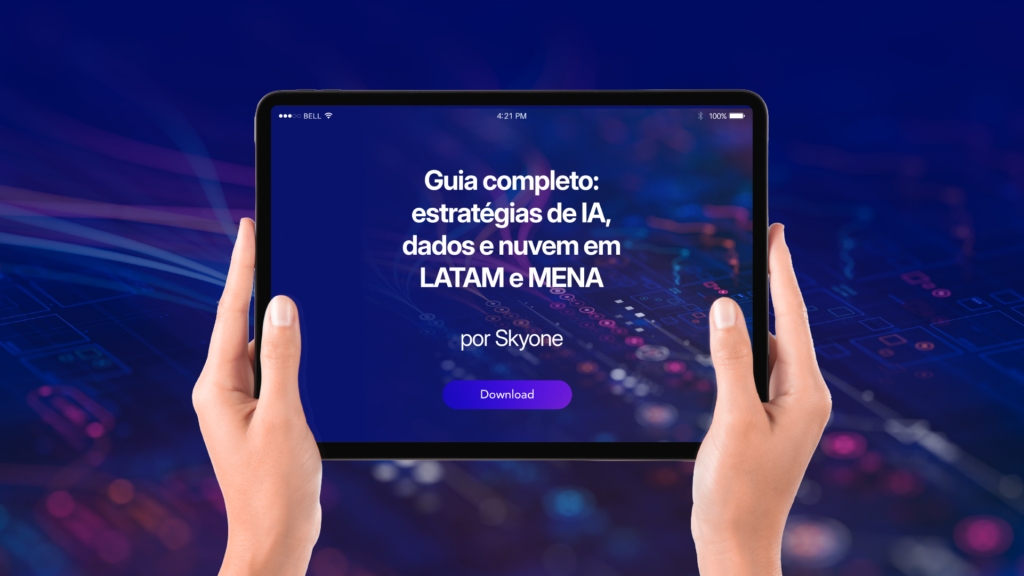1. Introduction: Why AI agents are entering operations for real
Artificial intelligence (AI) began as an analytical tool. Now, it's beginning to take on more autonomous roles , interpreting contexts, making decisions, and executing actions. This movement is making AI agents increasingly relevant .
According to a survey by InfoQ , 51% of companies already use AI agents in production , working on real processes, integrated with corporate systems and with well-defined business objectives.
This data points to a significant shift. We're no longer talking about isolated experiments or one-off interactions. AI agents are being applied to critical workflows , in areas such as customer service, monitoring, risk analysis, and operational automation, where agility and accuracy directly impact results.
In this article, we'll discuss how these agents have evolved from concept to practice. We'll explore what they do differently, where they're already delivering value, how to assess whether their adoption makes sense, and what to expect from future advancements.
Enjoy reading!
2. From perception to execution: what does an AI agent actually do?
What makes an AI agent different from other applications of artificial intelligence is not just what it knows, but what it does with it .
They combine three core capabilities : perceiving the environment, making decisions based on defined objectives, and acting autonomously. And they do this continuously , without relying on manual commands or static rules for each situation.
Instead of responding to an isolated stimulus, like a traditional predictive model, the AI agent maintains an active understanding of the context in which it operates. It observes patterns, interprets signals, and adjusts its actions based on what's happening—all while respecting business goals, constraints, and priorities.
In practice, this allows them to replace tasks that previously required constant human monitoring , such as identifying exceptions, adapting routines, or coordinating multiple systems in real time.
And as they integrate with other systems or agents, these solutions gain scale and can operate in a coordinated manner in more complex workflows, with less friction and greater precision .
But where exactly is this type of intelligence already being applied? We'll see that in the next section, with concrete examples of its implementation.
3. Concrete applications and real impact: where AI agents already operate
The presence of AI agents in operations is no longer an exception. They are being incorporated into critical routines , with sufficient autonomy to interpret situations, make decisions based on business criteria, and execute actions, often without the user realizing there is a system involved.
In customer service , AI agents organize requests, adapt responses based on customer history, and interact with different systems to resolve the request from end to end. And it's not just about responding well, but also acting in a context-aware manner .
In finance , AI agents are used to monitor highly granular indicators, such as variations in customer behavior, payment flows, or changes in operational limits. The agent identifies deviations and acts based on risk parameters, with traceability and consistency .
In operations , their application translates into agility . This is because AI agents reconfigure logistics routes, adjust production resources, and prioritize orders based on actual demand. These are small decisions in volume, but critical in impact .
internal support or compliance areas , AI agents are being applied to ensure that sensitive processes don't rely exclusively on human supervision: they validate records, check for inconsistencies, and perform simple corrections with controlled autonomy.
What do all these applications demonstrate? They demonstrate that AI agents work well where there are recurring decisions, distributed data, and a need for adaptive response . But that doesn't mean they should be implemented in a generic way.
Therefore, in the next section, we'll understand how to evaluate this scenario: when and why to prioritize the adoption of AI agents in your operation.
4. When to prioritize AI agents: signals that indicate the right time
The decision to incorporate AI agents should not be driven by the availability of the technology, but by the context in which it will be applied. In some operations, the presence of agents represents efficiency and reliability; in others, it may simply add unnecessary complexity.
A clear indicator is the density of operational decisions . The greater the volume of interdependent decisions that need to be made in short intervals, the greater the usefulness of delegating this logic to autonomous systems.
Another factor is the instability of the environment . Organizations that deal with constant variations, whether in customer demands, supply chains, and/or risk scenarios, tend to benefit from AI agents capable of adjusting routines and responses without relying on continuous manual review .
There is also the aspect of systems orchestration . When data is scattered and operations depend on multiple platforms that need to communicate with each other, AI agents can function as a layer of intelligence that coordinates execution and reduces bottlenecks.
And none of this is feasible without organizational maturity . Having clarity about business rules, governance criteria, and strategic objectives is what ensures that agent autonomy is productive , without leaving room for misaligned decisions.
Evaluating these elements allows us to distinguish when agents can act as a real force for efficiency and when their adoption is not yet sustainable. With this filter , it becomes clearer to see what lies ahead: the trends that should expand the autonomy of these systems and redefine their role in operations. Check it out!
5. What's Next: The Next Steps in the Evolution of AI Agents
AI agents are entering a new phase . While until recently, AI agents were seen as support resources, they are now beginning to take on leadership roles in critical processes . And projections indicate that their evolution will be marked by specific transformations in this type of technology.
Among the most relevant movements , the following stand out:
- Goal-oriented agents, not just commands
The concept of agentic AI is already in its early adoption phase. AI agents no longer react solely to isolated instructions and begin to break down objectives into tasks, plan actions, and learn from the results. McKinsey points out that this model is already showing benefits in areas such as Finance and Marketing , with significant reductions in effort in repetitive tasks.
- Collaboration in networks of specialized agents
Still in its early stages, cooperation between multiple specialized AI agents is beginning to be tested in research and prototypes. The idea is for each agent to take on a portion of the task, creating ecosystems capable of solving broader problems, from customer service to logistics. Recent studies describe this phenomenon as a "web of agents."
- Continuous governance for autonomous agents
This is a challenge that will likely intensify in the coming years. As autonomy increases, the need to monitor the performance of AI agents in production grows. Gartner predicts that by 2027, approximately 40% of autonomous agent projects may be discontinued due to a lack of robust governance mechanisms.
- Assessment that considers impact beyond technique
Today, most AI agent evaluations still focus on metrics like accuracy and latency. But the trend is that, as they take on more strategic roles, they will also be measured by their impact on processes, customers, and organizational objectives. Studies show that less than 30% of frameworks include this dimension, a trend that should gradually change.
- Specialization by sector as a competitive advantage
This movement is already beginning to emerge in regulated or technical sectors, where generalist AI agents face limitations. The trend is for new agents to emerge, prepared for specific contexts (such as Healthcare, Finance, or Retail), with built-in knowledge and rules. McKinsey indicates that this vertical integration will be one of the decisive factors in accelerating corporate adoption.
Here at Skyone , we understand that adopting AI agents requires more than technology: it requires integration with reliable data, continuous governance, and business alignment . That's why Skyone Studio was designed to enable our clients to create and orchestrate agents ready to operate in real-world scenarios, with the security and scalability their operations require.
If your company is looking to explore this potential in a structured and secure way, speak with a Skyone specialist and discover how to put AI agents into practice with real impact.
6. Conclusion: less hype , more results
AI agents have already proven they no longer need hype to justify themselves . Their relevance lies in what they already deliver today: operations that adjust in real time, decisions that follow business criteria without relying on constant supervision, and previously complex workflows that can now be coordinated more consistently.
Progress, however, lies not only in adopting the technology, but in making it evolve alongside the company's strategy. This is where many projects stand out: when agents cease to be isolated experiments and begin to operate as a structuring part of the corporate routine.
This means the discussion is no longer about when AI agents will be ready, but about when companies will be prepared to effectively integrate them. After all, it is at this intersection , between organizational maturity and technological autonomy, that the most consistent gains emerge.




